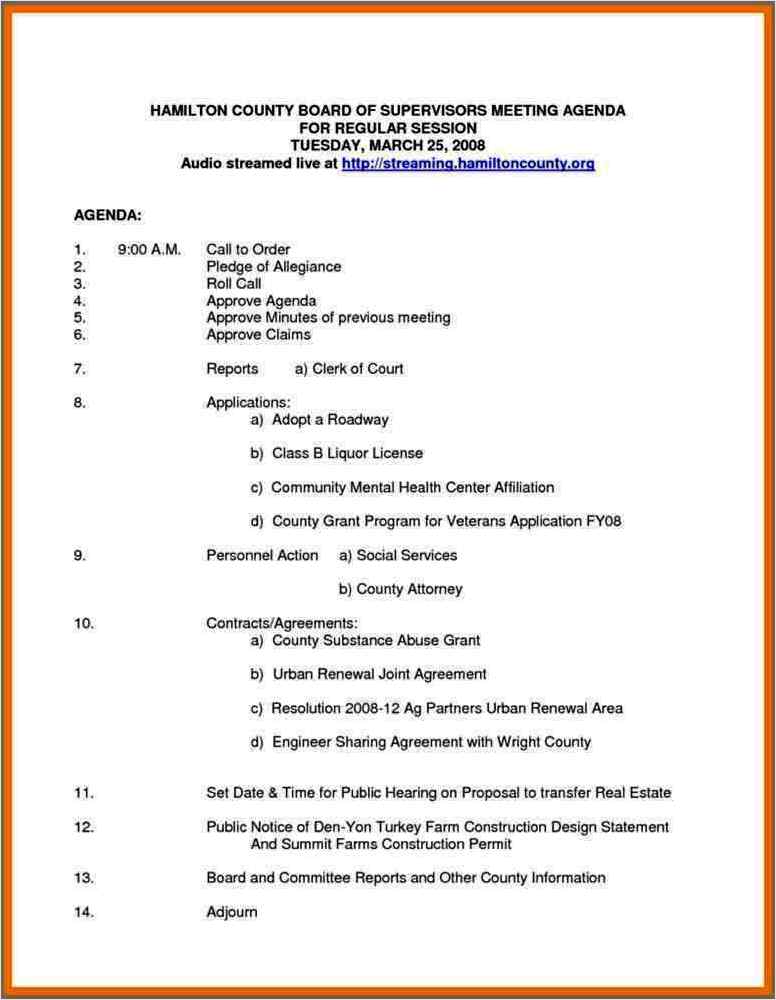Non-profit organizations play a crucial role in our society, working towards various causes and making a positive impact. To ensure the smooth functioning of these organizations, regular board meetings are essential. A well-structured and effective board meeting agenda sets the tone for productive discussions and decision-making.
In this article, we will provide a comprehensive guide to creating a non-profit board meeting agenda. We will cover the importance of an agenda, what it should include, and tips for conducting successful meetings. So, whether you are a non-profit board member or someone responsible for organizing these meetings, this guide will help you navigate through the process with ease.
Why is a Non-Profit Board Meeting Agenda Important?
A non-profit board meeting agenda serves as a roadmap for the meeting, ensuring that all necessary topics are discussed and decisions are made in a structured manner. Here are some key reasons why a well-planned agenda is crucial:
- Efficient use of time: A clear agenda helps in utilizing the limited time available for the meeting efficiently. It helps participants stay focused and ensures that all important topics are covered.
- Transparency and accountability: An agenda provides transparency by outlining the topics to be discussed, enabling all board members to come prepared. It also helps in holding individuals accountable for their respective responsibilities.
- Engagement and participation: A well-structured agenda encourages active participation from board members. It allows them to contribute their insights and expertise, leading to informed decision-making.
- Meeting documentation: An agenda serves as a record of the meeting’s discussions and decisions. It can be referred to in the future as a point of reference or for follow-up actions.
What Should a Non-Profit Board Meeting Agenda Include?
A non-profit board meeting agenda should be tailored to the specific needs and goals of the organization. However, certain key elements should be included in every agenda. Let’s take a look at each of them:
1. Call to Order and Welcome
The meeting should begin with a call to order, where the chairperson officially starts the proceedings. This is followed by a warm welcome to all board members, making them feel valued and setting a positive tone for the meeting.
2. Approval of Previous Meeting Minutes
Before diving into the agenda, it is important to review and approve the minutes of the previous meeting. This ensures that everyone is on the same page regarding past discussions and decisions.
3. Financial Report
Financial transparency is vital for non-profit organizations. Allocating time in the agenda for a financial report allows the board members to review the organization’s financial health, discuss any concerns, and make informed decisions related to budgeting and resource allocation.
4. Committee Reports
If your non-profit organization has committees, this is the time to hear their reports. Each committee should have an allotted time to provide updates on their activities, progress, and any challenges they might be facing. This helps in keeping the entire board informed and involved in the organization’s various initiatives.
5. Old Business
Old business refers to any unresolved matters from previous meetings. This section allows board members to revisit those topics, discuss any outstanding issues, and propose solutions or actions to be taken.
6. New Business
The new business section is where new topics or proposals are introduced for discussion and decision-making. This could include strategic planning, fundraising initiatives, program development, or any other matters relevant to the organization’s mission and goals.
7. Open Forum
Providing an open forum allows board members to raise any additional concerns or ideas that may not have been covered in the agenda. This encourages open dialogue and ensures that all perspectives are considered.
8. Adjournment
Finally, the meeting should be officially adjourned, marking the end of the proceedings. It is important to end on time and summarize the key decisions and action items for clarity.
Sample Non-Profit Board Meeting Agenda
- Call to Order and Welcome: The chairperson officially starts the meeting and warmly welcomes all board members.
- Approval of Previous Meeting Minutes: The minutes of the previous meeting are reviewed and approved.
- Financial Report: The organization’s financial health is discussed, including income, expenses, and budget allocations.
- Committee Reports: Each committee presents updates on their activities, progress, and challenges.
- Old Business: Any unresolved matters from previous meetings are revisited and discussed.
- New Business: New topics or proposals relevant to the organization’s goals are introduced for discussion and decision-making.
- Open Forum: Board members have the opportunity to raise additional concerns or ideas.
- Adjournment: The meeting is officially adjourned, and key decisions and action items are summarized.
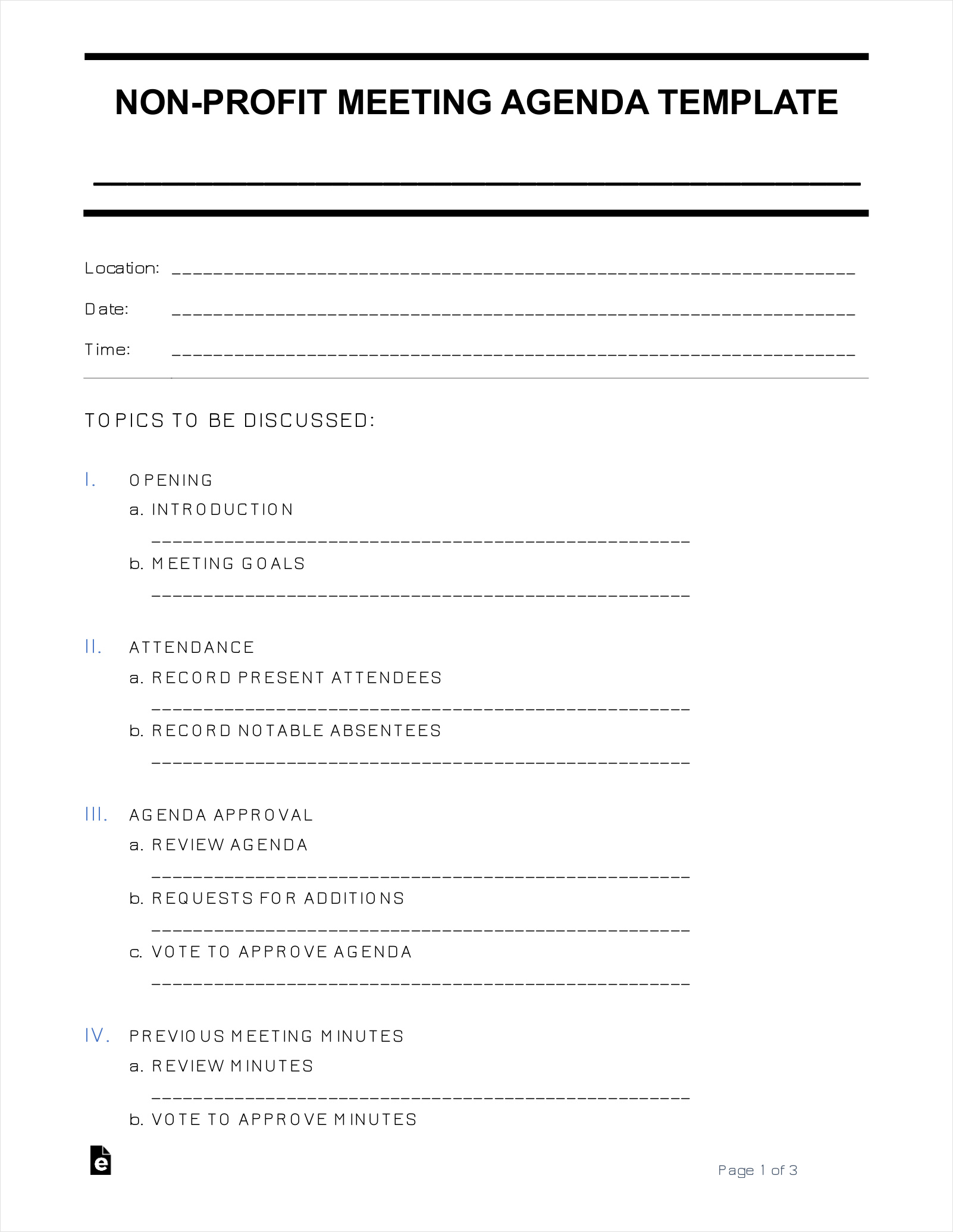
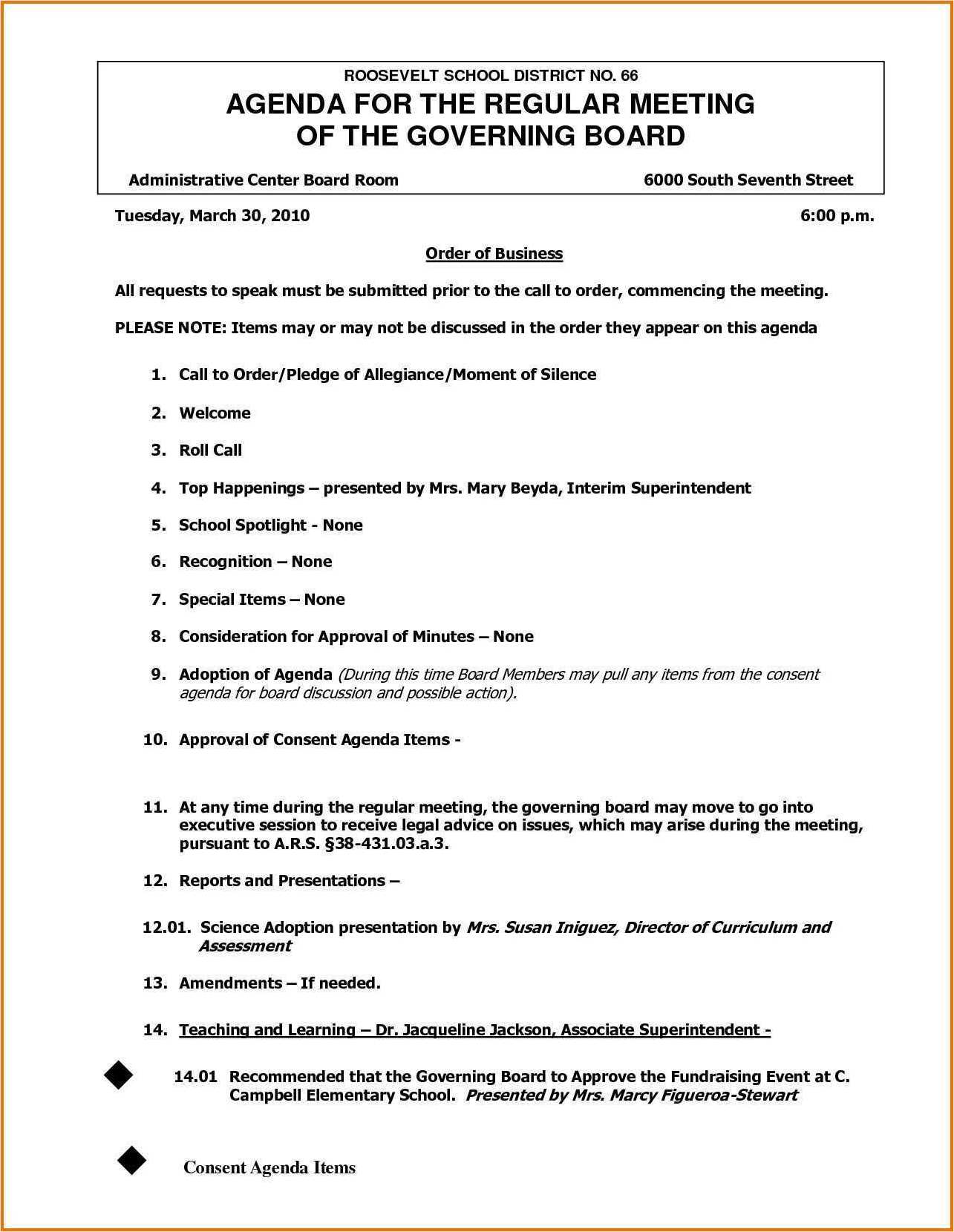
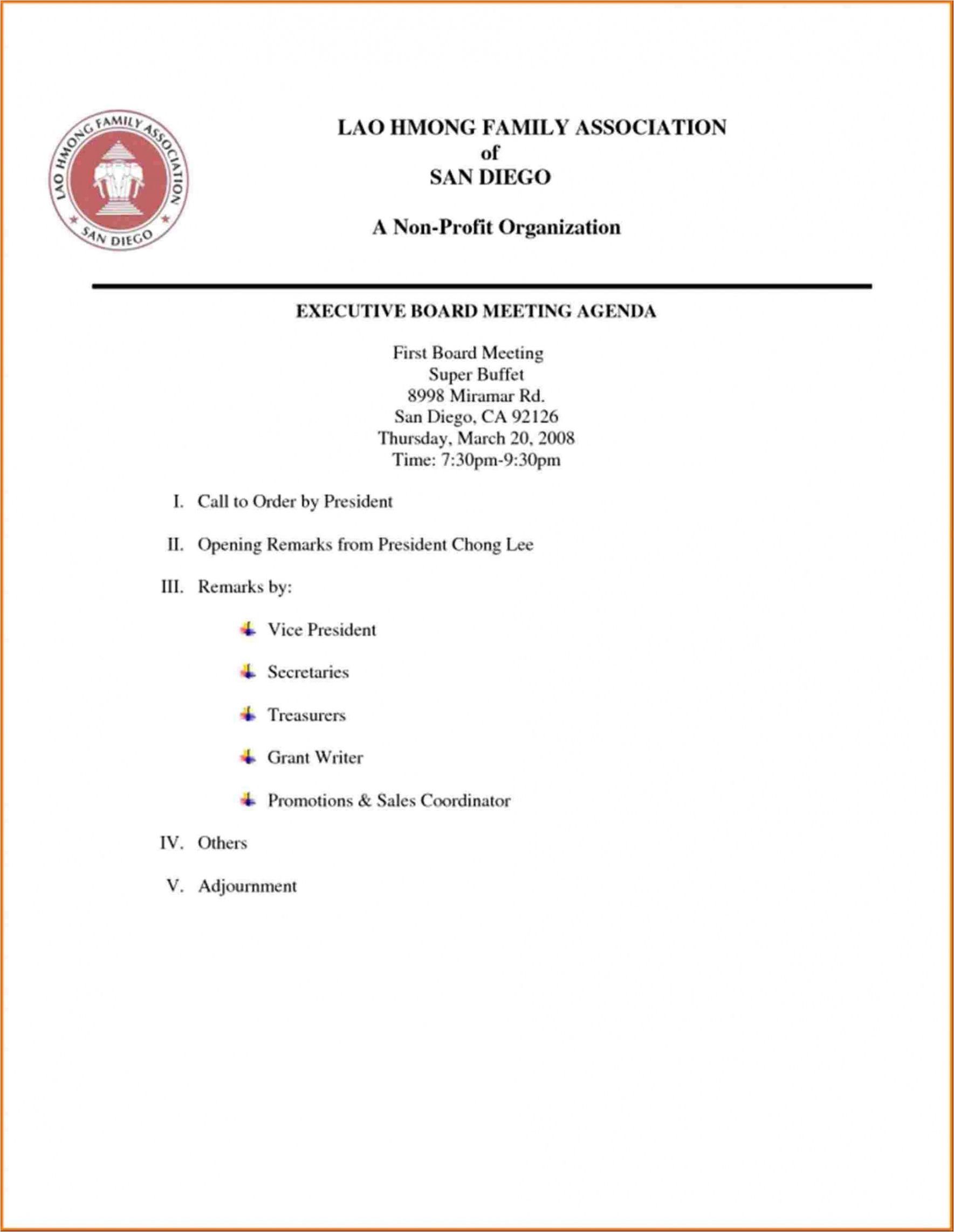
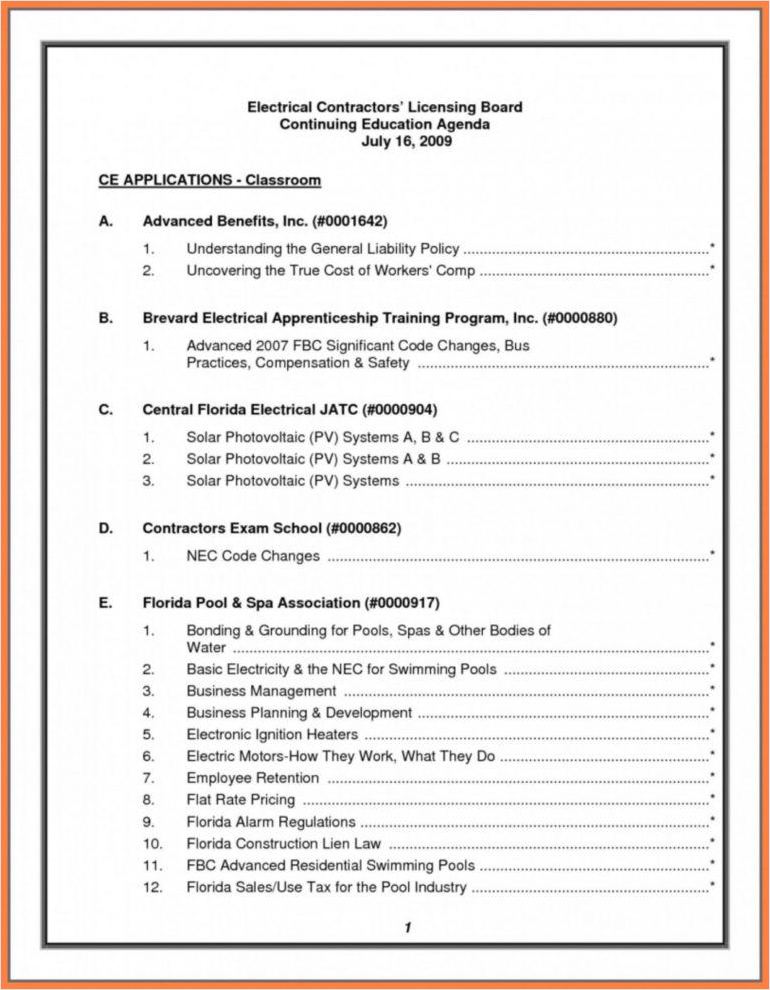
Tips for Conducting a Successful Non-Profit Board Meeting
Conducting a successful non-profit board meeting requires careful planning and execution. Here are some tips to ensure productive and engaging meetings:
- Prepare and distribute the agenda in advance: Share the agenda with board members well before the meeting, allowing them sufficient time to review and come prepared.
- Stick to the agenda: While it is essential to allow some flexibility, try to stay on track and cover all the items on the agenda within the allocated time.
- Promote active participation: Encourage all board members to actively participate by inviting their input, ideas, and suggestions. Create a safe and inclusive environment for open discussions.
- Assign time limits for each agenda item: To manage time efficiently, allocate specific time limits for each agenda item and stick to them. This ensures that discussions are focused and productive.
- Document meeting minutes: Assign someone to take detailed meeting minutes, capturing key discussions, decisions, and action items. Share these minutes with board members after the meeting.
- Follow up on action items: Ensure that action items are assigned to specific individuals and followed up on in subsequent meetings. This promotes accountability and progress.
- Evaluate and improve: After each meeting, evaluate its effectiveness and seek feedback from board members. Use this feedback to improve future meetings and make them more engaging and productive.
Conclusion
A well-planned non-profit board meeting agenda is essential for conducting productive and efficient meetings. It provides structure, transparency, and accountability, ensuring that all important topics are discussed and decisions are made promptly. By following the tips provided in this guide, you can create effective agendas and conduct successful board meetings that contribute to the overall success of your non-profit organization.
Non-Profit Board Meeting Agenda Template Excel – Download
